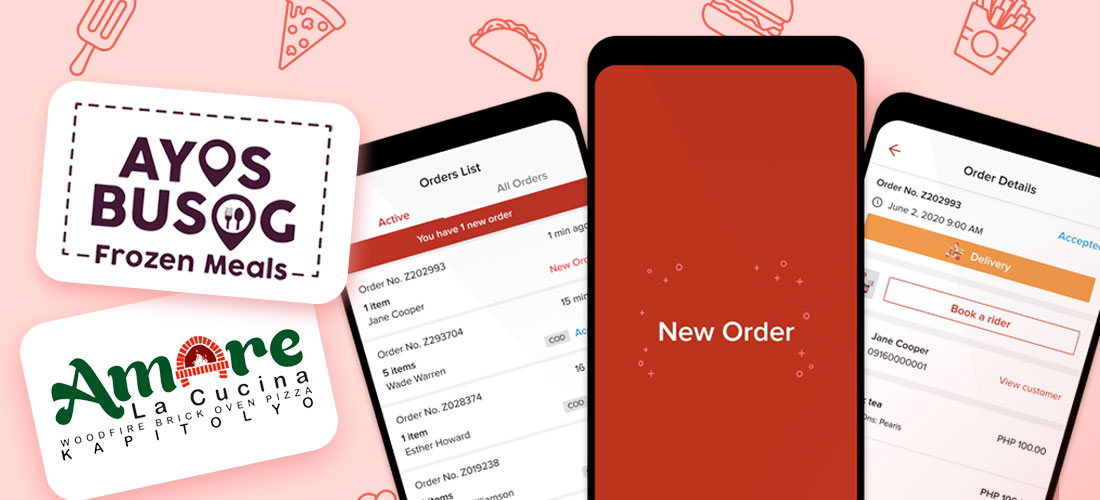Marketing your resto in 2021: Why commission fees hurt your profits
Two years into the pandemic, we have already become more or less accustomed to the changes COVID-19 has ingrained in our way of life. While these changes are not always easy, today, the conversation has shifted from merely surviving for the time being to thriving under these circumstances in the long term.
For many food entrepreneurs and restaurateurs, the first layer of their pivot involved embracing digital and making their take-out and delivery operations more robust. This often included partnering with third-party delivery apps so their businesses will be “discoverable” on the respective platforms.
However, we are realizing now that while third-party providers served a purpose early in the pandemic – apps were a good way for one’s food business to remain relevant – it is not exactly a sustainable strategy. Third-party apps help you survive but not exactly thrive.
How app fees damage profits
Admittedly, when we were all grasping at straws to find quick ways to save our food businesses amidst months of lockdown, joining a reputable delivery app was a godsend.
For one, they already had the tech in place to automate processes. They already had riders. And most of all, they already had people using their apps, meaning there was an assurance that hungry customers were bound to encounter your food business, in one way or another.
However, third-party apps demand commission fees ranging from 20-25% in exchange for the short-term comfort they provide. For a small food business struggling amidst a pandemic, this isn’t exactly a friendly rate.
Let’s put things in perspective. In pricing menu items, food entrepreneurs already factor in a profit. The strategy here is to charge enough to earn but make the price friendly enough for your target market. However, add a 20-25% commission fee from a third-party service, and chances are you’d have to choose between who’d take the blow: the customers or your profit? Would you raise your prices or take a cut from your earnings?
This is a crucial decision for many restauranteurs and food entrepreneurs. But this doesn’t always have to be the case. There are alternate paths to thrive under the current challenges that do not demand you pick one over another.
Customer service leading to greater returns
As we mentioned, while third-party providers do serve a purpose in helping your food business’ discoverability, ultimately, it shouldn’t be your be-all-end-all strategy. We’re not saying you should cancel your partnership altogether. However, It shouldn’t be your primary source of sales too; this way, commissions wouldn’t eat too much into your profit margins.
Think of delivery apps as merely the top of the funnel. They are middlemen that lead people to your business. You don’t want your customers to build a relationship with the middleman! They should only serve as an introduction. After being led to you, it should be your responsibility to keep them coming back. Make the service personal – because personalization is the one thing a business couldn’t achieve via a third-party provider.
You can look into creating promos and discounts unique to your business and not reliant on the mandate of the apps. Building a loyalty program is also another way to keep your best patrons engaged, that is not available via a delivery app.
E-stores are the solution
In your digital transformation journey, having an E-store strikes a balance between automation and personalization.
A service like ZAP E-store can handle both the set-up and integration of your e-business, whether you have an existing app or not. It reduces the need for manual coordination by streamlining processes, from order taking to inventory management. It also gives you the flexibility to accept both online and manual payments.
What makes having an E-stores truly special, though, is that it shifts the control back to you and away from a third-party provider. An E-store is the closest experience to running your restaurant, albeit online.
You get to integrate your own promos and discounts in whatever way you want to, whenever you like to. You get to actually see who of your customers are the ones that keep coming back and reward them in the process. And, you can do all this without the stress of thinking of exorbitant commission fees.
All these lead to higher profit margins altogether.
If you want to learn more about why 200+ F&B stores trust Zap, visit their website via this link.
Photo credits: Background photo created by benzoix | Background vector created by rawpixel.com

